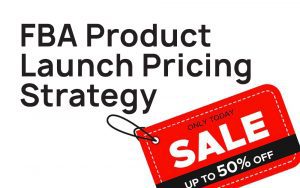
Feed Me – A Guide to Feeds for Shopping Engines, Market Places, & PLAs
The conundrum of digital marketing is you need several departments to work harmoniously toward the same goal. And in the case of eCommerce feeds, you need the marrying of entrepreneurship, online sales, and technical aptitude. A feed is information that it sent from one point to another, translated carefully to be understandable at the end point. The consequence of which if not done right is the like of playing the children’s game of telephone.
So do you sell frozen peas or do you sell flea repellent? Well that depends on what your feed told the third party where your information is being seen. A feed should be refreshed on a request basis. Especially if you have price changes, limited inventory, or new products coming in.
eCommerce Requires MANY Feeds
The reason eCommerce requires multiple feeds is in this day and age you aren’t just selling products at one storefront. You’re selling on 11 types of channels. Most people would get 2 of these right off the bat, websites and marketplaces. But there’s many more to consider such as shopping engines, product listing ads, and even display banner advertising.
Optional Fields Are Mandatory
If you’ve ever built a feed, you’ve probably seen that only a few fields are mandatory. And many more are optional. The thing is, if all you do is send a PDF of the feed requirements to your IT team, all they are going to do is fill in mandatory fields and call it a day. I’ve seen this at several companies. It really isn’t their fault because they have piles and piles of requests on their desks and as long as the feed goes live they can move onto the next project.
Examples of Mandatory Fields:
- Product Title
- Product Description
- Inventory (Stock)
Examples of Optional Fields:
- Color
- Material
- Manufacturer
Findability is Key to Accessibility
The reason optional fields matter? In an information age, the more you inform the consumer, the more transparency you use, the more likely they will be able to…
- Find your product
- Understand your product
- Buy your product
Example: Let’s say your company sells clothing. Well if you don’t list color in the attribute field, and the consumer is looking for a black dress, and not just a dress, then they’re going to find your competitor’s item and buy it, not yours. Simply putting “black” in the title of the product, or the description is insufficient. Take a look at this screen shot where it shows how on Amazon you can filter for color:
None of these products in this screen shot have black in the title, but they all probably uploaded black in the field for color. On the bottom left you can see where black has a check mark, indicating this particular search is for only items that are black.
One of the Fastest Ways to Grow eCommerce is Feeds
I’ve talked about how there’s a lot of money to be made selling in marketplaces in two other articles. How to Launch Marketplaces like Amazon/eBay/Sears and If you’re not on Amazon, you’re irrelevant.
But you can build feeds for many other channels. I’ll briefly touch base on shopping engines and product listing ads. Both are basically the same thing. PLAs are just Google’s shopping engine. Shopping engines include websites like Shopzilla, Pricegrabber, Become.com, and hundreds of others. A user interacts with these shopping engines by searching for a product they want, they find multiple companies to compare from, and then go to the company’s website to finish the purchase.
The distinction here, between a marketplace and a shopping engine, is where the consumer makes the purchase. With a marketplace, they buy directly from the marketplace. A user shops directly on Amazon/eBay/Sears etc. But with a shopping engine, you control the transaction. And generally, you are paying these shopping engines by CPC (Cost Per Click). Then there’s also affiliates, which you pay a cut of the actual transaction. Feeds aren’t as necessary in an affiliate model, but could also be valuable depending on the partnership.
The reason feeds help you grow eCommerce is you’re going directly to where the user is already comfortable shopping, and presenting the information they are looking for. They’re already in the buying pattern, and they’re likely going to buy regardless – the question is, did you build your feed so they can find your product – instead of your competitors?
Okay, Feeds are Important, What Now?
If you already have a feed in place, audit it. Map every attribute, and read the documentation for that feed’s setup. If you need to set a feed up, it’s probably easier to just hire a consultant to do the work for you. A person outside of your company can also audit your feed to make sure it’s accurate and getting you as many sales as possible. I’ve setup feeds for practically every type of product-based industry and can help you out.






